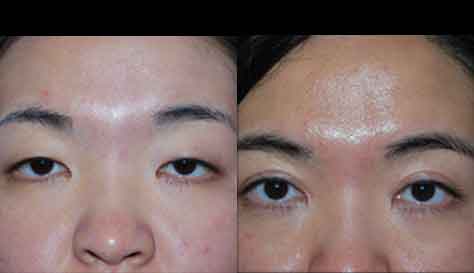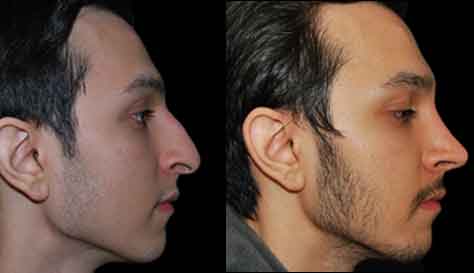Hispanic Rhinoplasty
Conveniently located to serve the areas of New Jersey and New York

Hispanic rhinoplasty has also been referred to as Latin rhinoplasty or Latino rhinoplasty by many patients. The New York and [primary_statefull] area has a substantial Latino population, and Dr. Ovchinsky has noticed a growing demand for Hispanic rhinoplasty in the past few years.
Contents
- 1 The most common goals of Hispanic rhinoplasty are:
- 2 Common features of the Hispanic nose include:
- 3 Hispanic Rhinoplasty surgical nuances:
- 4 FAQ
- 4.1 What do I need to avoid before surgery?
- 4.2 What about my daily medications before surgery?
- 4.3 What happens after surgery?
- 4.4 Are there any dietary restrictions following surgery?
- 4.5 When will my stitches be taken out?
- 4.6 How soon will I be able to exercise?
- 4.7 When will I be able to see the results?
- 4.8 What is special about the way Dr. Ovchinsky does the surgery?
The most common goals of Hispanic rhinoplasty are:
- enhancing the appearance of the nose while maintaining overall ethnicity;
- repairing the results of a previous unsuccessful rhinoplasty;
- treating a breathing problem or a congenital defect.
Like all other types of ethnic rhinoplasty, management of the Hispanic nose requires a thorough understanding of the ethnic anatomy and of the common issues encountered within this particular patient population. It should be noted that there is a fairly wide variability in the appearance of the Hispanic rhinoplasty patients based on the fact there are distinct intra-ethnic differences within the Hispanic population. For instance, Hispanic rhinoplasty patients with ancestry based more in Central and South America tend to have noses that look somewhat different from those with more of a Spanish heritage. That being said, there are many common features of the Hispanic nose that are encountered regularly by the experienced rhinoplasty surgeon.
Common features of the Hispanic nose include:
Thick Nasal Skin:
One of the most common features in the Hispanic nose is moderately thick skin. In many cases, the Hispanic nose will have thicker than average skin with more concentrated sebaceous glands. This often times translates into a nose that looks less defined in terms of the surface anatomy. This is largely because the thicker skin does not allow the underlying cartilage and bone to show through as easily as thin skin.
Dorsal Hump:
Another common characteristic of the Hispanic nose is a dorsal hump. In many cases, the dorsal hump will create the appearance that the nasal tip is drooping down more than desired. If nasal tip is naturally droopy, the dorsal hump will make it look even more obvious.
Weak Tip Cartilages:
In addition to thicker skin, the Hispanic nose tends to have weaker tip cartilage. This further compounds the problems related to thick skin since the underlying native cartilage is frequently too thin to adequately shape the overlying soft tissue.
Wide, Flared Nostril Base:
Many Hispanic noses also have a wide nostril base. The nostril base refers to the bottom of the nose where it attaches to the upper lip. In addition to being wide across, many Hispanic noses are also flared, which refers to an excessively rounded shape of the nostrils.
Hispanic Rhinoplasty surgical nuances:
One of the key considerations when performing Hispanic rhinoplasty is overcoming the relatively thick nasal skin. This typically means that more effort has to be put forth to reshaping the cartilage framework in this type of noses. This is commonly accomplished with use of cartilage grafting often times taken from the septum, ear or rib. In a majority of these cases, it is the nasal tip that requires grafting in order to achieve better definition and refinement. In these patients, cartilage grafts are strategically placed on top of the native tip cartilage. Some of the more common grafts used for this purpose include shield or tip grafts and lateral crural rim grafts. Once the nasal skin redrapes over the newly rebuilt tip cartilage framework, it should have more shape and definition than before.

One must keep in mind that the goal with nasal tip reshaping in the Hispanic nose is to simply move away from looking too round and wide. The goal is not to create a nasal tip that is markedly narrowed and more fitting for a Caucasian face. Of course the patient would like to see a definitive change in the shape of the tip, but this has to be done while maintaining ethnic consistency.
When it comes to reducing the height of the dorsal bridge in the Hispanic rhinoplasty patient, one must avoid aggressive change in this regard. The goal in Hispanic rhinoplasty patients should be to straighten the bridge on profile view and provide a gentle transition into the nasal tip region. In fact, some Hispanic rhinoplasty patients (especially males) even request that a slight convexity be left intact when reducing the bridge. Over aggressive bridge height reduction in the Hispanic patient can easily result in a nose that simply does not harmonize with the surrounding facial features.
Management of the wide, flared nasal base in the Hispanic rhinoplasty patient usually involves removal of the excess soft tissue volume contributing to the excess width. In some patients this requires what is called a sill incision. By removing a segment of the sill and suturing the edges back together, the nostril base can be brought in closer to the midline, thus narrowing the base. In other Hispanic patients, a wedge of soft tissue is removed from the outer border of the nostril, which more directly addresses the flaring component. And then there are certainly those patients that require a combination of the sill and wedge incisions to appropriately narrow the nasal base.
You can also find most of the answers to your questions about rhinoplasty surgery on our website under “Rhinoplasty FAQ”.
Needless to say, many Hispanic patients seek to improve the appearance of their noses without erasing their ethnic heritage and identity. It takes skill and sensitivity to achieve a cosmetic result that beautifies the face while respecting and preserving ethnicity. Dr. Ovchinsky has a very busy ethnic rhinoplasty practice in [primary_statefull] and New York. We would be delighted to see you at a consultation in our office and to have an opportunity to create the nose you have always dreamed of!
FAQ
What do I need to avoid before surgery?
If you are on “blood thinners,” you will be asked to stop them approximately one week prior to surgery. We also ask that you avoid certain over-the-counter medications. If you are taking some herbal supplements, you should stop those as well as they may contain blood thinning substances. Also, you have to completely quit smoking at least two weeks before surgery.
What about my daily medications before surgery?
You will have a preoperative appointment well in advance of your surgery when we will review all mediations with you. If you are on “blood thinners,” you will be asked to stop them approximately one week prior to surgery. We also ask that you avoid certain over-the-counter medications. You may continue taking most routine medications up until the morning of surgery with a small sip of water.
What happens after surgery?
You will go to the recovery room for a few hours until you are fully recovered from anesthesia. Once you are stable you will be taken home (or to a hotel) by your family member or a friend. You will want to stay relaxed for the first few days. You will need to keep your head elevated when in bed to help with faster resolution of swelling. You should begin to start walking, eating, and using the restroom the day after surgery. Your activity can slowly increase each day but it will take up to 2 weeks before you start to feel like your old self again. You should avoid any strenuous activity for 4 weeks. You will need to take medication prescribed to you by Dr. Ovchinsky, which usually include antibiotics, pain medicine, antibiotic ointment for the incisions, and occasionally anti-nausea medications.
Are there any dietary restrictions following surgery?
No. Patients can eat whatever they want. Advance your diet from liquids (fruit juice, milk shake, etc.) to soft food (pudding, macaroni and cheese, mashed potatoes and gravy, oatmeal, pasta) to solids as tolerated. To prevent dehydration, please drink as much juices and nutritional fluid as possible.
When will my stitches be taken out?
Stitches are normally removed five to six days after your surgery.
How soon will I be able to exercise?
Dr. Ovchinsky recommends that patients do not return to exercise for three weeks after their procedure.
When will I be able to see the results?
You may see the difference right away, and more so once the swelling goes down within the first one to two weeks. As with any surgical procedure, it takes anywhere from 6 to 12 months for the results to become final.
What is special about the way Dr. Ovchinsky does the surgery?
Dr. Ovchinsky tailors his surgical technique to an individual patient rather than using the same “run of the mill” surgery on everybody. The technique he uses causes minimal pain, has natural results, and is long-lasting. The vast majority of patients are quite surprised afterward at how little discomfort they have and how quickly they return to normal activity. Most patients have minimal bruising. Finally, with Dr. Ovchinsky technique and attention to details during skin closure, scars are typically minimal and are often difficult to see once they have fully matured.





